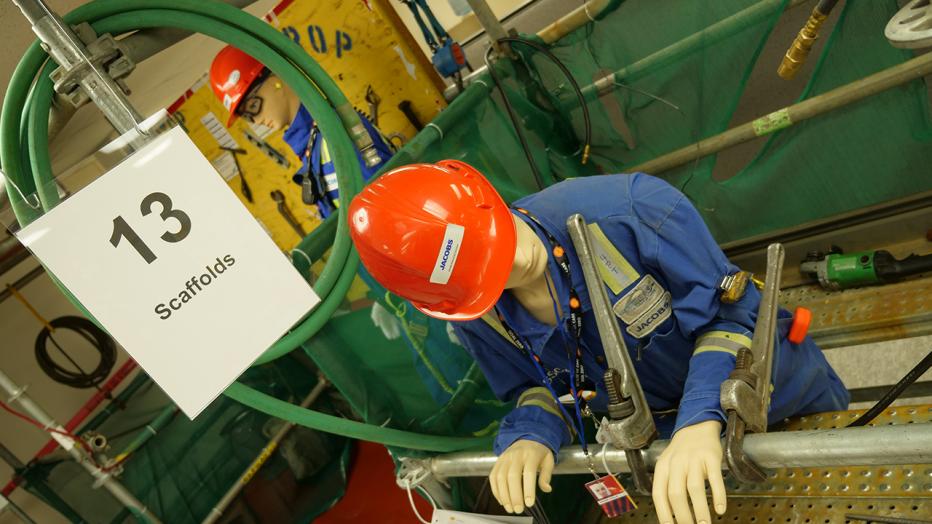



Jacobs. A world where you can.



As climate change threatens water security around the world, more communities are turning to water reuse as a resilient water supply solution and embracing the OneWater principle that all water has value. Jacobs has been supporting clients with water reuse programs for decades, beginning with the first applications of advanced wastewater treatment technologies in the 1960s. We provide our clients with a full range of services, from water reuse feasibility studies to design, construction and operations.



We’ve provided design-build services to the water sector for over 25 years and delivered more than 150 projects. We offer fully integrated design-build and design-build-operate capabilities to tackle the most complex water challenges and work in close collaboration with our clients.



For more than 30 years, Jacobs has been responsible for planning and implementing Lead and Copper Rule-related strategies which protect millions of people in the U.S. and Canada. Our work includes enhanced water quality monitoring strategies, sampling plan development, harvested pipe-scale analysis, lead service line inventories and replacement plans, corrosion control studies and the incorporation of equity and environmental justice considerations into compliance programs.



A curated selection of some of the top-listened to and trending podcast episodes from our popular If/When podcast series.



As a purpose-led company, we know we have a pivotal role to play in addressing the climate emergency. We consider this not only good business, but our duty to channel our technology-enabled expertise and capabilities toward benefitting people and the planet.



We work in partnership, delivering some of the most challenging, diverse and innovative projects and programs globally across multiple sectors. We integrate complex interfaces across planning, procurement and delivery to help unlock better social, environmental and economic outcomes from mega and giga projects.



As our clients navigate the digital transformation and growing cyber risks, we have positioned ourselves at the forefront of this growth, adding digital capabilities, products and tools to serve a growing set of customers.



Sit down with our visionary team of thinkers, dreamers and doers to see what a day in the life is like.



Together with our visionary partner, PA Consulting, we're establishing our position in high end advisory services, creating a springboard to expand in high value offerings beyond the core.


At Jacobs, we're challenging today to reinvent tomorrow by solving the world's most critical problems for thriving cities, resilient environments, mission-critical outcomes, operational advancement, scientific discovery and cutting-edge manufacturing, turning abstract ideas into realities that transform the world for good. With approximately $16 billion in annual revenue and a talent force of more than 60,000, Jacobs provides a full spectrum of professional services including consulting, technical, scientific and project delivery for the government and private sector.



The only certainty about the future is uncertainty. Resilience is an attribute of a smarter planet, and requires planning and adapting ahead of potential threats. We help our clients survive, recover, adapt and thrive.



Jacobs is working to help clients across the United States secure federal funding for projects that make our cities and communities more connected and sustainable. Working hand-in-hand with clients from coast to coast and everywhere in between, Jacobs develops bold, innovative solutions to address the nation’s toughest challenges.



Now more than ever, we appreciate the hard work, sacrifice and dedication of the medical profession in ensuring the health and safety of our communities.



Together, we are stronger. Together, we can transform the future.



Stories that capture our partnerships and innovative impact for a more connected, sustainable world



It’s called Visual Onboarding and it’s changing the way craft employees are onboarded at Shell’s Scotford site near Edmonton, Alberta, Canada. A collaborative effort between Shell and Jacobs, the onboarding facility uses real equipment, Personal Protective Equipment (PPE), tools and mannequins to demonstrate hazards and correct mitigation.
The Shell Scotford Complex consists of a bitumen upgrader, oil refinery, chemicals plant and a carbon capture and storage facility. Jacobs is one of Shell’s largest on-site contracts here, supporting maintenance, turnarounds and small capital construction projects.
Typical onboarding is in a classroom setting using traditional power point presentations and an instructor dictating to a large group. This investment by Shell and Jacobs takes small groups of 5-8 guided by a trained facilitator, often the group’s front-line supervisor, through 14 installations. The interactive displays and stations stimulate conversation and questions, identifying hands-on mitigation strategies not possible in a typical classroom setting.
The innovative new onboarding strategy represents a collaborative effort by Shell and Jacobs with the original version piloted at Shell’s Pernis facility. Shell is working towards a global roll-out once the program is reviewed for effectiveness, revised as needed, then it will be expanded.
Each installation is themed to convey distinct messages about Life Saving Rules (LSRs), Process Safety Fundamentals (PSFs) and other pertinent company safety themes such as hand injury prevention. The onboarding experience also allows the team to address multiple learning styles – visual, auditory and kinesthetic – resulting in better retention of our most important rules.
Not only for typical onboarding, the stations also serve as props for advanced training, Front Line Barrier Management (FLBM) assessments, behavioral-based training, and simulation (i.e. Breathing Air use) and can be updated to reflect changes to local OH&S codes, site practice or Control Framework change.
Simulating real field conditions before employees are in any danger and setting expectations of what good looks like will radically change how employees identify and mitigate risk.